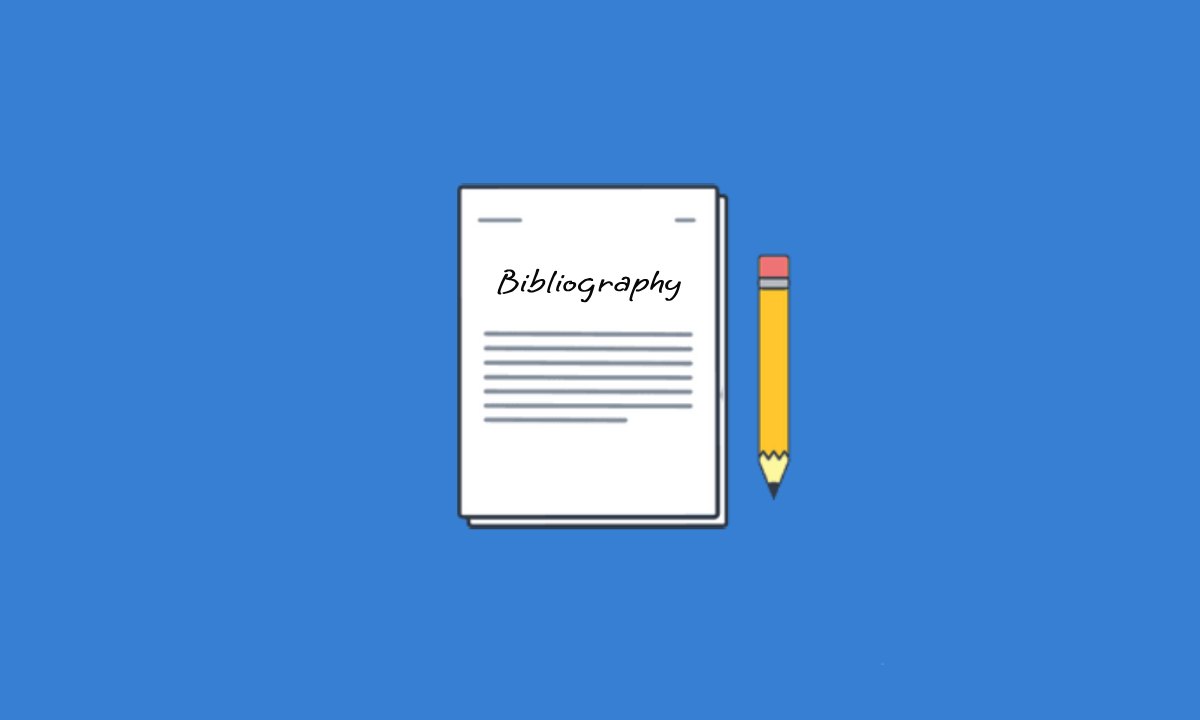What is Bibliography?
A bibliography is a comprehensive list of sources that were consulted or referenced in the process of researching and writing a scholarly work. These sources can include books, articles, websites, and other materials. The bibliography provides readers with the information needed to locate the original sources and gives credit to the authors whose works have contributed to the research.
Bibliography Types:
Below are some common types of bibliography:
1. Annotated Bibliography
An annotated bibliography includes a brief summary or evaluation of each source. The annotation can provide a summary of the content, an evaluation of the source’s reliability, and its relevance to the research topic. It typically follows one of the standard citation styles (e.g., APA, MLA, Chicago).
2. Working Bibliography
A working bibliography is a preliminary list of sources that you might use in your research. It is not as formal or complete as a final bibliography and can be modified as the research progresses. It helps in keeping track of potential references.
3. Enumerative Bibliography
An enumerative bibliography lists sources according to a specific criterion, such as author, subject, or date of publication. It provides a systematic overview of a body of literature and is often used in academic research.
4. Descriptive Bibliography
Descriptive bibliography provides detailed information about the physical characteristics of books and other printed materials, such as the format, paper, binding, and typographical details. It is commonly used in the field of rare books and manuscripts.
5. Analytical Bibliography
Analytical bibliography examines the history and methods of book production, including the printing process, textual variations, and publishing practices. It focuses on the physical creation of the book and the text’s transmission over time.
6. Subject Bibliography
A subject bibliography lists sources related to a specific subject or field. It helps researchers find relevant literature in a particular area of study. Subject bibliographies can be found in libraries and databases.
7. Period Bibliography
Period bibliography covers works published during a specific time period. It is useful for historical research and understanding the literature of a particular era.
8. National Bibliography
A national bibliography lists all the publications produced in a particular country. It is usually compiled by a national library or bibliographic agency and helps preserve the country’s literary heritage.
9. Personal Bibliography
A personal bibliography is a compilation of works by a specific author. It includes all the known publications of the author, providing a comprehensive view of their contributions.
10. Universal Bibliography
A universal bibliography aims to list all the books and publications available worldwide. While achieving this is practically impossible, attempts are made through international cooperation and cataloging efforts.
Bibliography Format:
The format for a bibliography can vary depending on the citation style you are using. Here are examples of bibliography formats for some of the most common citation styles: APA, MLA, and Chicago.
APA (7th Edition)
The American Psychological Association (APA) style is commonly used in the social sciences.
Books:
Author, A. A. (Year of publication). Title of work: Capital letter also for subtitle. Publisher.
Example:
Smith, J. A. (2020). Understanding psychology: Basics and applications. Psychology Press.
Journal Articles:
Author, A. A. (Year). Title of article. Title of Periodical, volume number(issue number), page range. https://doi.org/xx.xxx/yyyy
Example:
Doe, J. (2019). Cognitive development in children. Journal of Child Psychology, 45(3), 234-245. https://doi.org/10.1234/jcp.2019.4567
MLA (9th Edition)
The Modern Language Association (MLA) style is often used in the humanities.
Books:
Author’s Last Name, First Name. Title of Book. Publisher, Year of Publication.
Example:
Smith, John. Understanding Psychology: Basics and Applications. Psychology Press, 2020.
Journal Articles:
Author’s Last Name, First Name. “Title of Article.” Title of Journal, vol. number, no. number, Year, pages. DOI or URL (if applicable).
Example:
Doe, Jane. “Cognitive Development in Children.” Journal of Child Psychology, vol. 45, no. 3, 2019, pp. 234-245. https://doi.org/10.1234/jcp.2019.4567
Chicago (17th Edition)
The Chicago Manual of Style offers two systems: Notes and Bibliography, and Author-Date. Below is the Bibliography style.
Books:
Author Last Name, First Name. Title of Book. Place of Publication: Publisher, Year.
Example:
Smith, John. Understanding Psychology: Basics and Applications. New York: Psychology Press, 2020.
Journal Articles:
Author Last Name, First Name. “Title of Article.” Title of Journal volume number, no. issue number (Year): page range. DOI or URL (if applicable).
Example:
Doe, Jane. “Cognitive Development in Children.” Journal of Child Psychology 45, no. 3 (2019): 234-245. https://doi.org/10.1234/jcp.2019.4567
How to Write a Bibliography?
Writing a bibliography involves compiling a list of sources you have referenced in your work. The format and style of a bibliography can vary depending on the citation style you are required to use. Here are the general steps to create a bibliography.
Steps to Write a Bibliography
- Collect Information: Gather all the necessary information about your sources, such as the author(s), title, publication date, publisher, and any other relevant details.
- Choose a Citation Style: Determine which citation style is required or preferred (APA, MLA, Chicago, etc.).
- Format Each Entry: Follow the specific rules for formatting each entry according to the chosen citation style.
- Organize Entries: List the entries in alphabetical order by the author’s last name or by the title if there is no author.
Bibliography vs Footnotes
A bibliography and footnotes are both methods of citing sources in academic writing, but they serve different purposes and are formatted differently. Below are some major differences between bibliography and footnotes.
- Placement: Footnotes appear at the bottom of the same page where the reference or comment is made, while a bibliography is placed at the end of the document.
- Purpose: Footnotes provide immediate access to source information or additional context related to specific points in the text, while a bibliography offers a comprehensive list of all sources consulted or cited throughout the entire document.
- Content: Footnotes typically include specific source information or additional comments relevant to the page content, while a bibliography includes full bibliographic details for each source, such as author names, titles, publication dates, publishers, and page numbers.
- Numbering: Footnotes are numbered consecutively throughout the document, while a bibliography is generally not numbered but may be alphabetically organized.
- Format: Footnotes can vary in format depending on the citation style and often require page-specific details, while a bibliography entry follows a consistent format and does not include page numbers unless referring to a specific part of a source.



